Table of contents
Asparagus ( Asparagus officinalis ), also known as vegetable asparagus ( organic ) and common asparagus, is both Can be eaten raw or cooked. Whether white, green or purple - asparagus is a valued vegetable that impresses with its fine aroma.
Use in the kitchen
With its unique taste and versatile processing options, asparagus enriches numerous dishes.
Can you eat asparagus raw? The delicate asparagus is a highlight of vegan spring cuisine, both raw and cooked. This makes it a welcome addition to cold and warm dishes. Asparagus is used raw when it is young and tender. Some recipes such as asparagus salads or asparagus carpaccio contain the uncooked vegetable. If you want to enjoy asparagus raw, it is best to take thin stalks and cut or slice them very finely to minimize the toughness.
Green, white and purple asparagus differ not only in their appearance, but also in their taste and preparation. Green asparagus, which grows above the ground and is exposed to sunlight, is a strong green color. It has a slightly nutty note and needs a shorter cooking time because of its tender skin. With thicker green asparagus stalks, the lower third is peeled; young specimens do not need to be peeled. Green asparagus is ideal for grilling, frying or steaming and also goes well raw (cut into thin slices) in spicy salads. It retains its freshness when grilled or briefly fried. It develops its full aroma when marinated in a mixture of sesame oil, balsamic vinegar and fresh thyme or oregano .
White asparagus grows underground and remains pale. It is sweeter and sometimes has a slightly bitter aftertaste. It must be peeled before eating, for which it is best to use a vegetable peeler or special asparagus peeler. White asparagus is often boiled or steamed. It requires a longer cooking time. The delicate taste of cooked asparagus goes particularly well with lemons and herbs such as parsley or tarragon, making it the perfect side dish. This asparagus can also be used as a base for hearty, creamy soups . For a vegan asparagus soup, cook it together with potatoes, onions, garlic and oat cream and puree the ingredients into a fine cream. Garnish the finished soup with chives, chopped walnuts or pine nuts .
Purple asparagus is a special variety of green asparagus. The purple color is created by exposure to light. It is more tender than white asparagus, but has a stronger flavor than green asparagus. Purple asparagus is prepared in a similar way to green asparagus. Strong heat destroys the purple color and turns the stalks green again - gentle preparation results in less loss. In contrast, purple white asparagus is made from white asparagus (see below).
In salads, blanched asparagus is a great accompaniment to grilled tofu or tempeh . Blanched green asparagus also tastes great in a nutritious salad as a vegan main course. Combine it with cooked lentils, spring onions and tomatoes and marinate the salad with a dressing made from lemon juice, mustard, salt andpepper .
Vegan recipe for asparagus carpaccio with raspberry dressing
Ingredients (for 4 people): 300 g white asparagus (raw, organic), 200 g green asparagus (raw, organic), 100 graspberries, lemon juice from ½ organic lemon, 1 teaspoon grated lemon peel, 1 tablespoon raspberry vinegar, 2 tablespoons rapeseed oil (cold-pressed), 20 g chopped walnuts, salt andpepper .
Preparation: Peel the white (and green) asparagus and cut off the woody ends. Wash the raspberries and let them dry on a kitchen towel. Slice the asparagus spears into wafer-thin strips using a vegetable slicer or vegetable peeler and arrange in layers on a plate. Crush 1 tablespoon of the raspberries and mix with lemon juice, raspberry vinegar, rapeseed oil, salt and pepper. Drizzle the raspberry dressing over the asparagus and leave covered for 15 minutes. Sprinkle with lemon zest and pepper and garnish with the remaining raspberries and chopped walnuts.
Vegan recipes with asparagus can be found under the note: " Recipes that have the most of this ingredient ".
| Not only vegans or vegetarians should read this: Vegans often eat unhealthily. Avoidable nutritional errors . |
Purchasing - Storage
In Central Europe, the main season extends from April to June . June 24th marks the traditional end of the asparagus season to give the plants enough time to regenerate. With the help of agricultural foil and by warming the soil, it is possible to influence the time of harvest. For example, asparagus can be harvested from greenhouses in December. Between September and the beginning of January, stalks from South America and South Africa can be found in stores. Green asparagus is available all year round and often comes from Peru. 1
Asparagus is available in large supermarket chains such as Coop, Migros, Denner, Volg, Spar, Aldi, Lidl, Rewe, Edeka, Hofer, Billa etc., often in organic quality. You can also buy asparagus seasonally in organic supermarkets (e.g. Denn's Biomarkt and Alnatura ) and at weekly markets. Since organically grown asparagus has a higher concentration of bioactive substances, this should be preferred. 14
The freshest asparagus can be obtained by buying it directly from the producer or at the market. It is advisable to take into account the local growing regions and the local season, because after picking, the asparagus continuously loses freshness, taste and tenderness. 1
The availability of asparagus (raw) varies depending on the size of the store, catchment area, etc. You can find our recorded food prices for the DA-CH countries above under the ingredient image - and by clicking you can see their development at various suppliers.
Storage tips
To keep asparagus fresh, we recommend wrapping it in a damp cloth and storing it in the refrigerator, where it will stay fresh for 2-3 days. Alternatively, you can store green asparagus upright in a container of water.
If you want to store asparagus for a long time, freeze it. To do this, wash and peel the stalks, but do not cook them. Frozen asparagus will stay fresh for 8-12 months. When preparing it, put the frozen asparagus directly into hot water or add it to a dish, which will reduce the cooking time slightly. 1
Ingredients - Nutritional values - Calories
Raw asparagus has a low energy and fat content of 20 kcal and 0.12 g fat per 100 g. It contains 2.2 g protein and 2.1 g fiber per 100 g.
The vegetable is rich in vitamin K, with 42 µg per 100 g. This amount represents 55% of the recommended daily requirement. A similar amount of vitamin K is found in Chinese cabbage (43 µg/100g) and celeriac (41 µg/100g). A food with significantly higher values is chard (830 µg/100g).
Folate is another important vitamin in asparagus. When you eat 100 g of asparagus, you absorb 52 µg of folate, which is 26% of the recommended daily dose. The folate content is comparable to that of pointed peppers (53 µg/100g). Raw spinach contains a higher proportion of the vitamin at 194 µg per 100 g. Other B vitamins and vitamin C are less present.
Other essential micro and macro nutrients are also found in asparagus. The iron content in 100 g of asparagus is 2.1 mg, which represents 15% of the daily requirement and is comparable to the iron content of leeks . There are few examples of raw vegetables with more iron: the garden black salsify has slightly more at 3.3 mg/100g. However, much higher iron levels are found in morels (12 mg/100g).
With 202 mg of potassium per 100 g, asparagus covers 10% of the daily dose. Ripe pigeon peas contain many times more potassium (1392 mg/100g). 4
If you look at the structure of the asparagus plant, you can see that the nutrients it contains are concentrated mainly in the upper parts and especially in the tips of the asparagus stalks. 5
Health effects
The low-calorie asparagus is rich in vitamins and minerals and, with its fiber content, contributes to healthy digestion.
Secondary plant substances
Many of the health effects of asparagus can be attributed to the secondary plant substances it contains. Our article on secondary plant substances provides an overview of the classification of substance groups, their occurrence in foods and possible effects on humans.
Asparagus contains the following secondary plant substances:
- Isoprenoids: Saponins: Protodioscin, Dioscin, Asparasaponin, Yamogenin; Terpenes: triterpenes (beta-sitosterol, stigmasterol), sesquiterpenes (abscisic acid); Carotenoids : Lutein, Zeaxanthin, Capsanthin, Capsorubin, Violaxanthin, Mutatoxanthin, Neoxanthin, Beta-carotene 5, 6,30,31
- Polyphenols: Flavonoids: flavonols (rutin, quercetin, kaempferol, isorhamnetin, noricaritin), flavones (anthocyanins, apigenin); phenolic acids: ferulic acid, chlorogenic acid, vanillic acid, caffeic acid, p -coumaric acid, hydroxybenzoic acid; phytoestrogens: lignans, isoflavones 5,6,10,30,31
- Organic sulphur-containing compounds: Asparagusic acid 5 Asparaptin 5
- Alkaloids 6
However, it should be noted that the composition of secondary plant substances in asparagus can vary depending on the variety, time of harvest and growing conditions. Therefore, quantities are only of limited use and should only be understood roughly.
If white asparagus is exposed to sunlight after harvest, it can turn slightly purple or pink . 1,27,28 This means an increase in anthocyanins, but can reduce the market value. 5 In Italy and France, however, purple white asparagus is considered an asparagus specialty and in Japan it could become a trend. 1,27,28 Purple green asparagus varieties such as Pacific Purple or Purple Passion grow above ground and, for genetic reasons, develop a higher proportion of anthocyanins than green stalks. 6,26,28
Due to its variety of nutrients and bioactive compounds, asparagus is said to have antioxidant, antitumor, antifungal and anti-inflammatory properties. 6,31 Several studies, both in the laboratory and in experiments on mice, have shown that the secondary plant substances have a destructive effect on cancer cells. Inhibitory effects were found on cells of ovarian cancer, 7,8 breast cancer, 6,9 pancreatic cancer, colon cancer 6 and blood cancer. 30
The fiber and bioactive substances in asparagus are found in all parts of the asparagus plant and can have positive effects on digestion by increasing the diversity of intestinal bacteria. Recent studies show that the saponins contained in asparagus in particular have an antifungal effect and inhibit the growth of harmful bacteria in the intestine. 5,10
Sulfur compounds contribute to the typical asparagus taste, but also have health benefits. Sulfur-containing compounds, which are also found in garlic, onions and broccoli, can lower LDL cholesterol levels, regulate blood pressure and prevent cancer. The main sulfur compound in asparagus is asparagusic acid, which is also the main cause of the characteristic smell of urine after eating asparagus. In laboratory studies, asparaptin, a similar sulfur compound, has led to a regulation of high blood pressure in humans. Derivatives of asparagusic acid, along with some other sulfur compounds from asparagus, also inhibit the activity of cyclooxygenase, an enzyme that is linked to inflammatory diseases and the development of cancer. 5
Several in vivo studies on rats have also shown a positive effect of asparagus on diabetes: the bioactive substances in asparagus can reduce the level of glucose and triglycerides in the blood and stimulate increased secretion of the "insulin hormone". 31
Although there are no reported human studies to date to confirm the health benefits of consumption, interest in the phytochemicals in asparagus is growing due to the laboratory studies cited. 5
Dangers - Intolerances - Side effects
Skin contact with asparagus peels can trigger an allergy because they contain the substance triatian-5-carboxylic acid. People who frequently peel and handle asparagus (e.g. harvest workers) are particularly at risk of developing this allergy. The allergic reaction, also known as "asparagus scabies", manifests itself in rashes on the hands and face and in respiratory tract irritation. 11
People with impaired renal function or high levels of uric acid in the blood should consume asparagus in moderation, as excessive consumption can worsen symptoms. Certain substances such as purines can cause a greater accumulation of uric acid in the body when renal function is impaired. This can lead to rheumatic-like symptoms such as inflammation, swelling and pain. Although asparagus contains fewer purines than animal products, it is advisable for people with pre-existing conditions to consume it in small quantities. 1,12
Folk medicine - natural healing
The vegetable is considered to be a diuretic and is therefore used to treat kidney diseases. Many asparagus preparations (powder and capsules) are the focus of the weight loss industry, which hailes them as a miracle cure for purification, weight loss or as a detox superfood. There is no medical evidence 1,5,13 to support this to date.
Several asparagus species are traditionally used as herbal remedies in China and Korea. The vegetable is used, among other things, to treat urinary problems. 5 Traditional Chinese Medicine ( TCM ) particularly often uses the plant parts and rhizome of Chinese asparagus ( Asparagus cochinchinensis 13 ). A review study from 2020 shows its potential for various pharmaceutical applications and for clinical studies. 29
In traditional Indian medicine, asparagus root extracts from various species of asparagus 13 are used to strengthen the female reproductive system, promote fertility and increase breast milk production. There is also evidence that in ancient Greece and the Roman Empire, asparagus extracts were used as a tonic to prevent and cure various ailments, including kidney, bladder and liver diseases, rheumatism, asthma and cancer. Herbal books from the 15th and 16th centuries have also been found in European monasteries, which provide information on its importance as a medicinal plant at that time. In addition to the aphrodisiac effect, these sources mention a health effect for urinary stone problems, for promoting urination and for purifying the blood. These properties are still attributed to asparagus in traditional folk medicine today. 5,13
Ecological footprint - animal welfare
The ecological footprint of asparagus depends on various factors. A German study of different production methods showed that the CO 2 footprint can vary considerably depending on the origin, cultivation method and means of transport. Unheated cultivation in Germany had the best value at 0.8 kg CO 2 eq/kg. The CO 2 balance of heated cultivation was 1.5 kg CO 2 eq/kg due to the higher plastic consumption and energy expenditure. In order to be able to make asparagus available in central European supermarkets all year round, it is often imported from Peru. Asparagus imported by ship from Peru had almost twice as high emissions as German asparagus (2.6 kg CO 2 eq/kg), while asparagus imported by air freight had a value about four times higher at 8 kg CO 2 eq/kg. 16
The increased environmental impact of imports is also reflected in water consumption. In the main export country of Peru, asparagus cultivation leads to significant increases in water demand. This contributes to water shortages for some of the poorest Peruvian communities and increases social conflicts and vulnerability to the effects of climate change. 17 The global average amount of water required (water footprint) to produce 1 kg of asparagus is 2150 liters, which is significantly higher than for broccoli (285 liters) or eggplant (362 liters) - and shows the enormous water consumption of asparagus production. 18
Organically grown asparagus is preferable to conventionally grown asparagus, because the pesticides used in conventional farming are often still in the end product. In 2022, the Stuttgart Chemical and Veterinary Investigation Office found residues of the fungicide fosetyl that exceeded the permitted maximum level when examining asparagus sold in Germany. Pesticide residues were also detected. 15 Chemical-synthetic plant protection products are prohibited in organic farming: it is therefore best to use organic asparagus.
For detailed explanations of various sustainability indicators (such as ecological footprint, CO2 footprint, water footprint), see our article: What does the ecological footprint mean? .
Animal welfare - species protection
The agricultural films used extensively in asparagus cultivation can affect soil microbes as well as birds and mammals. Various studies have shown that the microplastics removed from agricultural films change the composition of important soil bacteria. In these studies, it was found that a microbiome develops on the plastic films and their decomposed parts, which may change the basic properties of the soil. It is not yet possible to estimate what effects this change may have. Since the microbial composition is essential for soil health, these results are worrying. 19,20,21
The environmental impact also affects the fauna above ground. Both the plastic covering and the daily walking of the fields during the harvest season make asparagus fields unsuitable habitats. Bird mapping shows that certain bird species are less common, while others are threatened with extinction. A lack of nesting sites for ground-nesting birds and food from small mammals for birds of prey is leading to a decline in these bird species in agricultural areas. 22,23
Worldwide occurrence - cultivation
Asparagus ( Asparagus officinalis ) is a perennial plant that originally comes from the eastern Mediterranean and Asia Minor. Asparagus plants have been cultivated for more than 2000 years. 6 Today, the area under which asparagus is grown covers more than 200,000 hectares and it can be found on all continents. The main producers are China, Central and South America and Europe. 24
Found in the wild
The vegetable known as "wild asparagus" is not a separate species, but belongs to the Asparagus officinalis family . 13,2 The biggest difference between the two is that wild asparagus has escaped cultivation. It is native to the eastern Mediterranean, western Asia and southern Europe, where it is found in forests. 2 In central Europe, cultivated asparagus is occasionally found growing wild. 13
In addition to the cultivated vegetable asparagus, which is found almost worldwide, another wild asparagus species, Asparagus acutifolius, has been used for culinary purposes in the Mediterranean region for centuries. 1,13
If you come across "wild asparagus" or "forest asparagus" at a weekly market, it is usually not real wild asparagus, but the young flower buds of the Pyrenean star of Bethlehem ( Ornithogalum pyrenaicum ), which is often imported from France. The young shoots of wild hops ( Humulus lupulus ) or goat's beard ( Aruncus dioicus syn. sylvestris ), which are found wild in German-speaking countries, are also often sold at markets as "wild asparagus". 3
Cultivation - Harvest
In German-speaking countries, asparagus is produced both conventionally and organically . Production requires a lot of effort and working time.
Soil preparation before planting takes 1-3 years. Ideally, a light, sandy soil is ideal, which allows for good warming and prevents the asparagus stalks from deforming. Green asparagus also thrives in clayey soil. The asparagus rootstock or young asparagus plants are planted using special machinery. In the first year, they require regular watering, weed control and fertilization. In the second year, white asparagus is insulated, while this is not necessary for green asparagus. From the third year onwards, the asparagus plants are covered with a film, which can also be combined with a tunnel depending on the climate and region. The film allows the soil temperature to be controlled. The black side promotes faster warming, which leads to earlier budding, while the white side slows down growth to ensure a continuous harvest. 1
To harvest, the asparagus stalks are picked by hand. After uncovering them with your hands, the stalks are cut off with an asparagus knife at a depth of 25 to 30 cm. 25 The first European asparagus is harvested in Greece and Spain in mid-February, and in France from mid-March. Although asparagus from heated areas is available in Central Europe from December/January, the main asparagus harvest takes place between April and 24 June. 1 Outside the domestic asparagus season, vegetable asparagus is often imported from Peru, where it thrives in the sandy soil of the desert region. Thanks to the consistently warm climate, up to three harvests per year are possible there. 25
Further information
Asparagus belongs to the Asparagus family (Asparagaceae). More than 200 species of asparagus can be identified worldwide, with Asparagus officinalis being the most commonly cultivated and marketed species. 9
Purple asparagus is the result of a genetic mutation that occurred spontaneously in Italy and led to the green asparagus variety 'Violetto d'Albenga'. This led to further varieties, many in California. In contrast, the so-called 'Viola', 'Asparagi viola' and 'pink asparagus spears' are white asparagus that turn a uniform pink or purple 27,28 when exposed to sunlight after harvest (variant: only colored tips 1 ). However, the terms are often confused, which makes it difficult to distinguish between them.
Alternative names
Asparagus is also known as vegetable asparagus, common asparagus or garden asparagus. White asparagus is colloquially known as "white gold" due to its limited seasonal availability. In English it is called asparagus (asparagus spear).
Bibliography - 31 Sources (Link to the evidence)
| 1. | Bundeszentrum für Ernährung. Vom Acker bis zum Teller. Spargel. 2023. |
| 2. | Specialityproduce com: Wild Asparagus. |
| 3. | Hausgarten net: Wilder Spargel: Wo wächst er? So kann man ihn anbauen. 2022. |
| 4. | USDA (United States Department of Agriculture). Nährstofftabellen. |
| 5. | Pegiou E, Mumm R et al. Green and white asparagus (Asparagus officinalis): a source of developmental, chemical and urinary intrigue. Metabolites. 2020;10(1):17. |
| 6. | Guo Q, Wang N et al. The bioactive compounds and biological functions of Asparagus officinalis L. – A review. Journal of Functional Foods. February 2020;65:103727. |
| 7. | Zhang X, Wang J et al. Asparagus officinalis combined with paclitaxel exhibited synergistic anti-tumor activity in paclitaxel-sensitive and -resistant ovarian cancer cells. J Cancer Res Clin Oncol. Juli 2023;149(7):3871–3883. |
| 8. | Xu G, Kong W et al. Asparagus officinalis exhibits anti-tumorigenic and anti-metastatic effects in ovarian cancer. Front Oncol. 14. July 2021;11:688461. |
| 9. | Romani A, Casciano F et al. Anticancer activity of aqueous extracts from Asparagus officinalis L. Byproduct on breast cancer cells. Molecules. 21. October 2021;26(21):6369. |
| 10. | Redondo-Cuenca A, García-Alonso A et al. Nutritional composition of green asparagus (Asparagus officinalis L.), edible part and by-products, and assessment of their effect on the growth of human gut-associated bacteria. Food Research International. January 2023;163:112284. |
| 11. | Medlexi de: Spargel. 2021. |
| 12. | Internisten-im-netz de: Zu viel Spargel kann ungesund sein. 2007. |
| 13. | Nowack R. Spargel - Eine vielleicht unterschätzte, aber sicherlich unzureichend untersuchte Heilpflanze. Z Phytother. Juni 2006;27(3):147–154. |
| 14. | Ku YG, Kang DH et al. Influence of different cultivation systems on bioactivity of asparagus. Food Chemistry. April 2018;244:349–358. |
| 15. | Chemische und Veterinäruntersuchungsämter (CVUA) Stuttgart. Hacker K, Wieland M, Scherbaum E. Rückstände und Kontaminanten in Frischgemüse aus konventionellem Anbau 2022. Erschienen 2023. |
| 16. | Schäfer F. Carbon Footprint ausgesuchter gartenbaulicher Kulturen im Rahmen eines Pilotprojektes zur neuen PAS 2050-1 [Dissertation]. Universitäts- und Landesbibliothek Bonn; 2014. |
| 17. | Progressio, Centro Peruano de Estudios Sociales, Water Witness International. Drop by drop: Understanding the impacts of the UK’s water footprint through a case study of Peruvian asparagus. 2010. |
| 18. | Mekonnen MM, Hoekstra AY. The green, blue and grey water footprint of crops and derived crop products. Hydrol Earth Syst Sci. 25. Mai 2011;15(5):1577–1600. |
| 19. | Huang D, Xu Y et al. Degradation of polyethylene plastic in soil and effects on microbial community composition. Journal of Hazardous Materials. 15 August 2021;416:126173. |
| 20. | Amare G, Desta B. Coloured plastic mulches: impact on soil properties and crop productivity. Chemical and Biological Technologies in Agriculture. 19. January 2021;8(1):4. |
| 21. | Qi Y, Ossowicki A et al. Effects of plastic mulch film residues on wheat rhizosphere and soil properties. Journal of Hazardous Materials. April 2020;387:121711. |
| 22. | Selleneit T, Verdugo-Raab D, Kipp S, Sprenger D, König B. Agrarfolien: Sozioökonomische und ökologische Bewertung des Einsatzes von Kunststofffolien im Spargelanbau in Deutschland und daraus resultierende Handlungsempfehlungen. Diskussionspapier-Reihe Nachhaltigkeitstransformation & Nachhaltigkeitstransfer; 6. 2022;3578 KB. |
| 23. | Alsleben K, Hellwig T (2013) Gutachten: Erfassung der Brutvögel auf Anbauflächen mit Folienspargel im SPA Mittlere Havelniederung 2013. |
| 24. | Hamdi A, Jaramillo-Carmona S et al. Asparagus. In: Jaiswal AK. Nutritional Composition and Antioxidant Properties of Fruits and Vegetables. Elsevier; 2020. S. 121–40. |
| 25. | Umweltberatung at: Spargel: Frühjahrsputz mit Gemüse. |
| 26. | Dong T, Han R et al. Anthocyanins accumulation and molecular analysis of correlated genes by metabolome and transcriptome in green and purple asparaguses (Asparagus officinalis L.). Food Chemistry. January 2019;271:18–28. |
| 27. | Asparagusworld com: Innovation and experimentation define Japan’s asparagus sector. Innovative growing techniques and sustainability practices are spreading across Japan’s production areas, as consumers seek novelty and environmental responsibility. 2023. |
| 28. | Saporie com: Asparago violetto di Albenga. |
| 29. | Wang M, Wang S et al. Asparagus cochinchinensis: A review of its botany, traditional uses, phytochemistry, pharmacology, and applications. Front Pharmacol. 30. November 2022;13:1068858. |
| 30. | Li Y, Yang X, Wang F, Zhao J, Zhang C, Wu D, et al. Mechanism of action of Asparagus officinalis extract against multiple myeloma using bioinformatics tools, in silico and in vitro study. Front Pharmacol. 2023;14:1076815. |
| 31. | Olas B. A review of the pro-health activity of Asparagus officinalis L. And its components. Foods. 2024;13(2):288. |

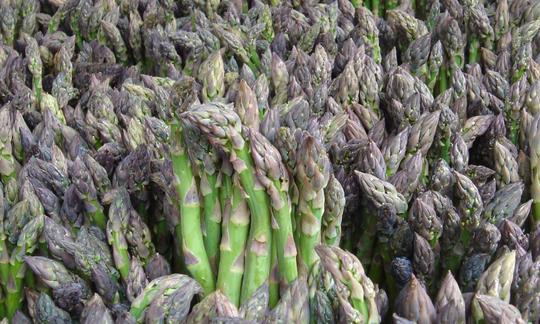

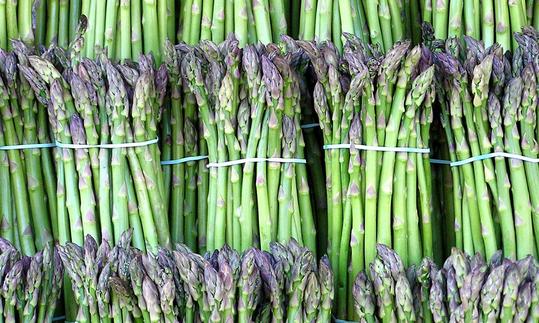

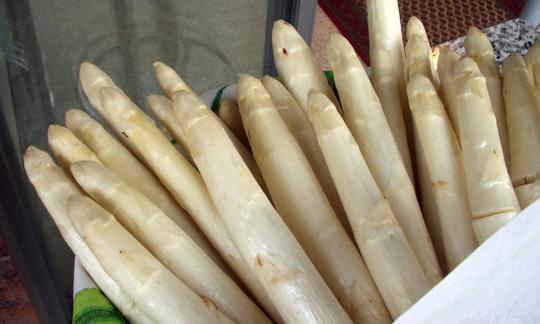

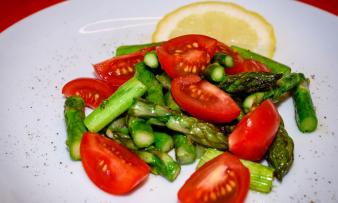
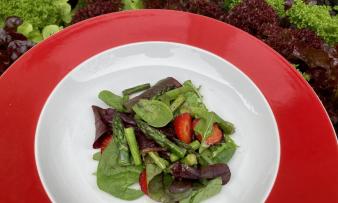



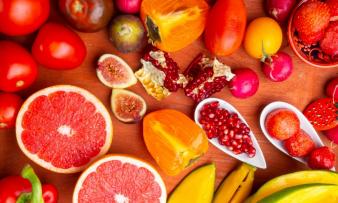


Comments